Asus Zenfone 12 Ultra review

Display
The Zenfone line previously experienced a significant screen size bump going from the tenth to the eleventh generation. On paper, the Zenfone 12 Ultra seems to have the exact same display as the Zenfone 11 Ultra. As far as we can tell, the Zenfone 12 Ultra uses an 8-bit E6 Samsung Flexible AMOLED panel, just like its predecessor.
The screen measures 6.78 inches in diagonal and has a 1080 x 2400 pixels resolution. You get dynamic refresh rate switching for regular everyday use, thanks to LTPO tech, between 1Hz and 120Hz. It can actually go as high as 144Hz, but that's only in gaming mode.
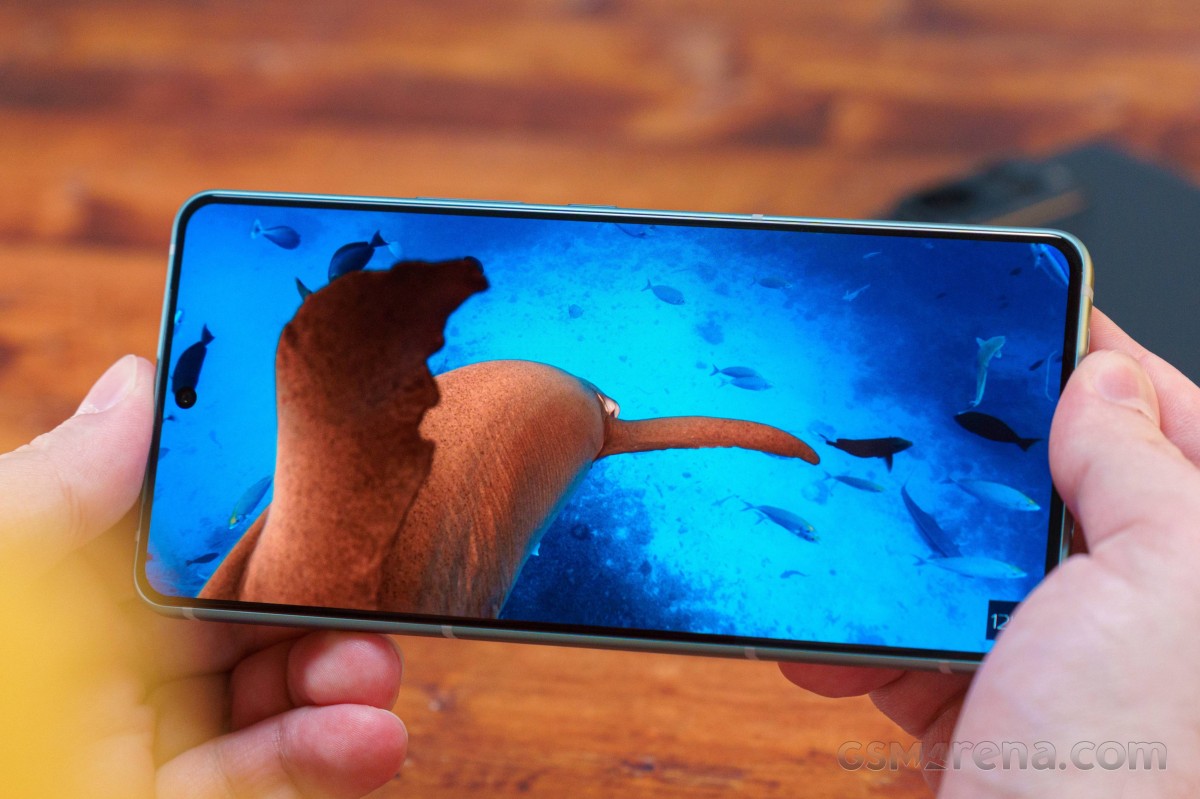
In our standardized testing, we measured 616 nits of brightness in regular mode by maxing out the slider. There is, however, an "extra brightness" toggle that boosts the figure to around 920 nits. The phone also has a max brightness mode triggered by a bright environment. It reached an impressive 1965 nits output. These figures are a bit better than what we measured on last year's Zenfone 11 Ultra and are more than adequate to ensure a great user experience outdoor, even in direct sunlight.
The minimum brightness at point white is 6.4 nits in regular mode, but there is an "Extra Dim" toggle that brings that down to just 3 nits. It's worth pointing out that some competing phones can go as low as 1nit.
The Zenfone 12 Ultra has a 144Hz maximum refresh rate. However, that maximum mode is only available for games and apps through Game Genie on a per-app basis. For regular everyday operation, the refresh rate cap is actually 120Hz.
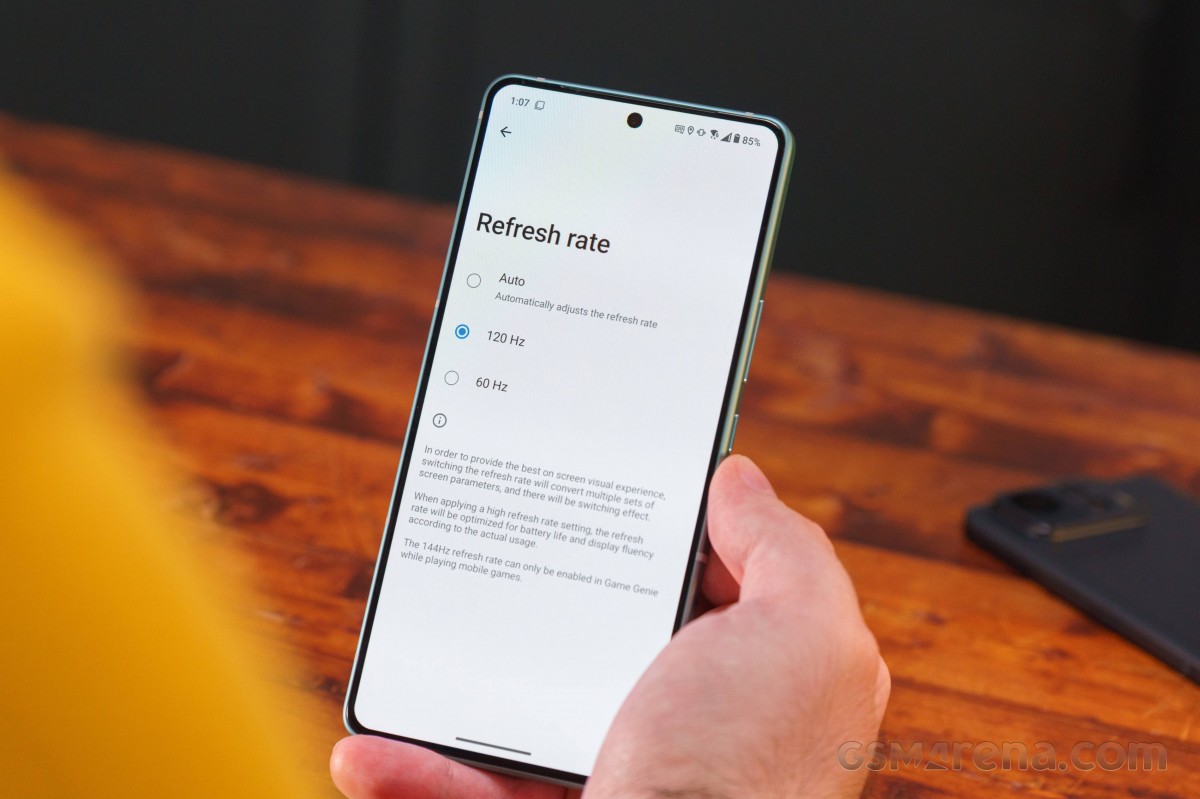
The phone has a total of three refresh rate modes to choose from in settings. 60Hz mode is self-explanatory. The other two modes are 120Hz and Auto. Both incorporate automatic switching logic through LTPO tech down to 5Hz when the phone is idle for a few seconds. The difference is that in Auto mode, the Zenfone 12 Ultra also switches down to 60Hz occasionally for things like video playback, which is not the case in 120Hz.
The Zenfone 12 Ultra has the highest possible Widevine L1 certification, allowing apps like Netflix and other streaming services to offer up FullHD content. The phone has hardware decoding support for HDR10, HDR10+ and HLG. Everything except for Dolby Vision.
Battery life
The Zenfone 12 Ultra has a pretty large 5,500 mAh battery on board. It makes pretty good use of the capacity as well. The Snapdragon 8 Elite is decently efficient, and so is the LTPO OLED panel on the phone.
We did our usual standardized testing and got a very good Active Use Score of 13:55 hours. That said, it is worth noting that last year's Zenfone 11 Ultra managed a notably better Active Use Score from the same capacity battery.
UPDATE, 30 Jan: We've updated the battery results below with notable improvements in the web and video runtimes.
Our new Active Use Score is an estimate of how long the battery will last if you use the device with a mix of all four test activities. You can adjust the calculation based on your usage pattern using the sliders below. You can read about our current battery life testing procedure here. For a comprehensive list of all tested devices so far, head this way.
Charging speed
In keeping with its longstanding tradition, Asus has equipped the Zenfone 12 Ultra with 65W HyperCharge technology. At least, that's what Asus has decided to call the charging tech. In reality and in our testing, the current never actually exceeded 55W while charging. That's definitely not us complaining, though, since this charging standard is standard Power Delivery.
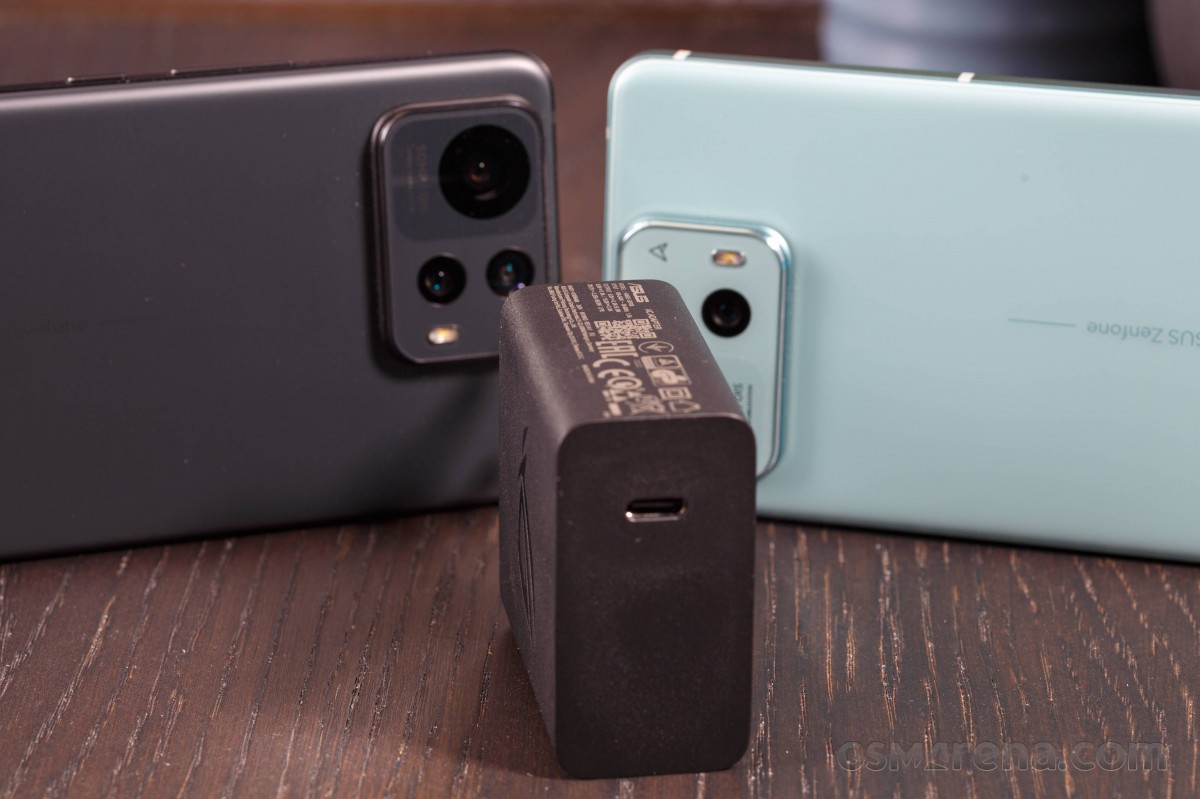
Unfortunately, there is no charger in the Zenfone 12 Ultra box. Still, you can easily acquire any good 65W PowerDelivery 3.0 charger and get the maximum charging speeds available on the phone. Asus, of course, recommends getting one of their own models. Our testing was done with a 67W ROG charger from the ROG Phone 9 Pro and the 3A cable it comes with. We also tried a 5A cable, and the charging speeds were the same.
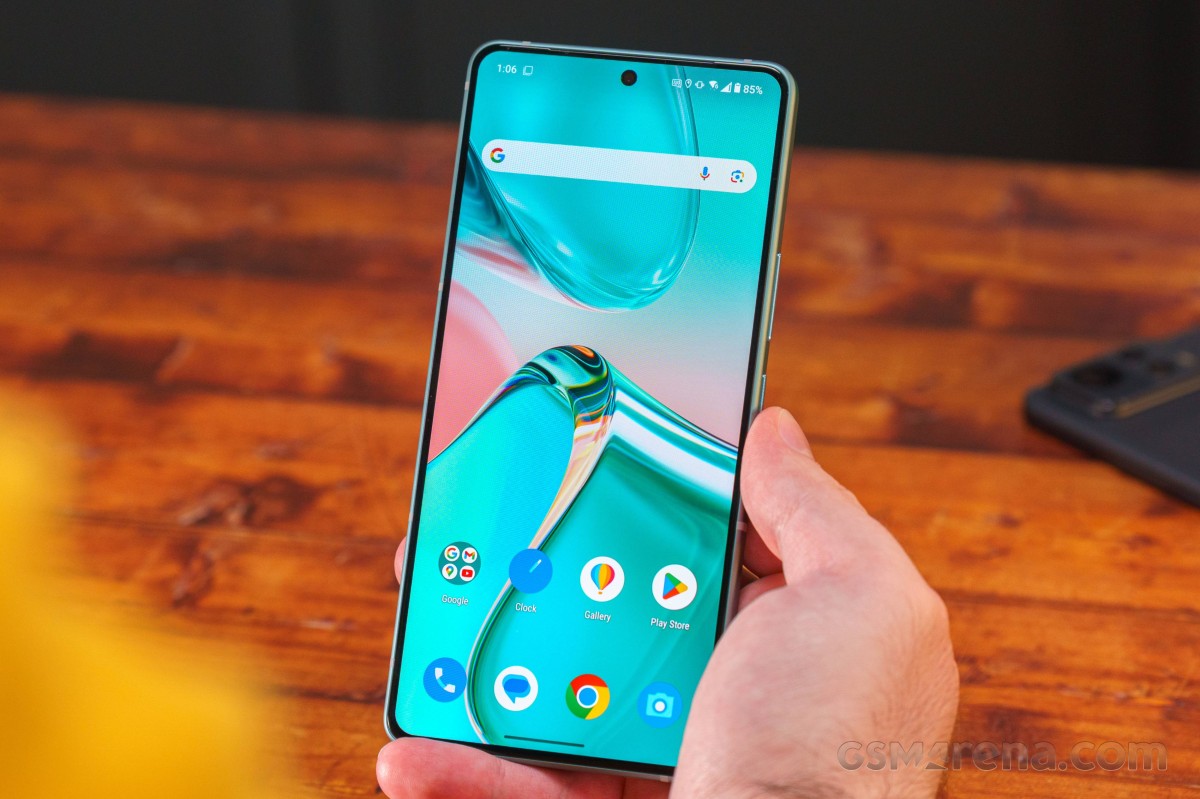
We did our standardized testing, and it was no surprise that the Zenfone 12 Ultra, with its identical 5,500 mAh battery and charging support, charges at basically the same rate as the Zenfone 11 Ultra. That is to say that fifteen minutes on the charger gets you around 46% battery, and thirty minutes results is about 77%. A full charge consistently took us right around 45 minutes. That's a pretty good charging rate in our book. Far from chart-topping, but still very good for a 5500mAh battery.
Speakers - loudness and quality
The Zenfone 12 Ultra has a stereo speaker setup. The top speaker doubles as the earpiece, which does, however, mean that it is facing forward, while the bottom speaker is facing down or to the side, depending on how you hold the phone. This intrinsically leads to some unbalanced output. Even so, the Zenfone 12 Ultra manages a pretty convincing stereo effect with a wide and rich sound stage.
Sound quality is relatively high with nice, well-developed mids, clear highs, and even some bass. This stereo speaker system seems effectively identical to the one inside the Zenfone 11 Ultra, though that said, the Zenfone 12 Ultra has seemingly gotten a bit quieter.
The Zenfone 12 Ultra managed a GOOD loudness score in our testing.
In keeping with Asus tradition, the Zenfone 12 Ultra has a dedicated AudioWizard menu where the DIRAC-powered equalizer resides. There are multiple presents as well as manual sliders. There is also support for Dirac Virtual surround sound with headphones, plus Qualcomm's aptX Adaptive/HD/Lossless and Snapdragon Sound, Hi-Res Audio and Hi-Res Audio Wireless.
Use the Playback controls to listen to the phone sample recordings (best use headphones). We measure the average loudness of the speakers in LUFS. A lower absolute value means a louder sound. A look at the frequency response chart will tell you how far off the ideal "0db" flat line is the reproduction of the bass, treble, and mid frequencies. You can add more phones to compare how they differ. The scores and ratings are not comparable with our older loudspeaker test. Learn more about how we test here.
Connectivity
The Zenfone 12 Ultra is a dual-SIM 5G device. It simultaneously supports SA/NSA Sub-6 connectivity on both nano SIM slots. It also has eSIM support. The phone has GPS (L1+L5), BDS (B1I+B1c+B2a), GALILEO (E1+E5a), QZSS (L1+L5), NavIC and GLONASS for positioning. Local connectivity includes Wi-Fi 7/be with triple-band support, which means you can use the fresh 6GHz band.
There is also Bluetooth 5.4 with LE support and aptX HD, aptX Adaptive and aptX Lossless. High-res wireless audio is also supported. There is also NFC on board, but no FM radio receiver. There is a 3.5mm audio jack on board, though, with Hi-Res audio support.
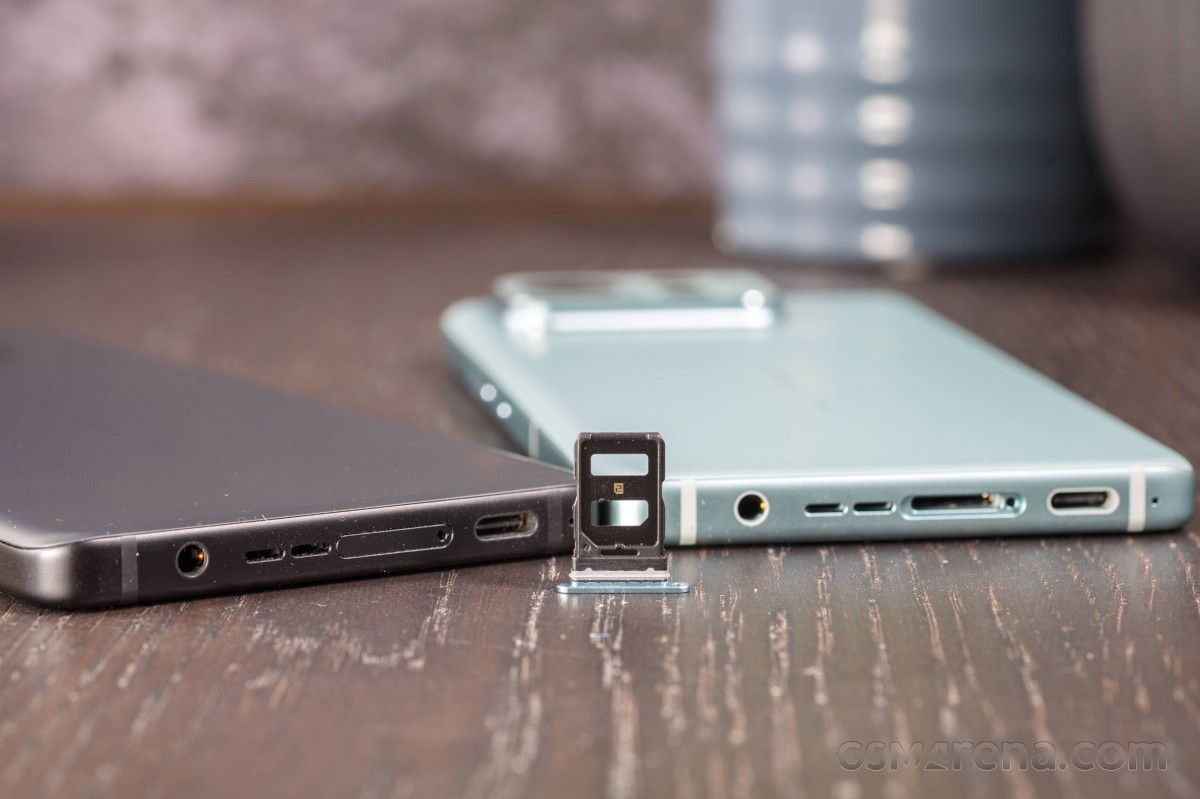
A 5Gbps data connection backs up the USB port and supports USB Host/OTG. Unfortunately, unlike the ROG Phone line, the Zenfone 12 Ultra does not support video output via the Type-C port. You are stuck using wireless display casting.
The Zenfone 12 Ultra has a pretty full set of sensors on board. There is a TDK-InvenSense icm456xx accelerometer and gyroscope combo, Asus-branded light and Asus-branded hardware proximity sensors. Also on board is a Voltafield AF6837 magnetometer and compass combo. There is no barometer.
Reader comments
- JellyBean
- 28 Feb 2025
- X@c
Mine is normal so far. Asus doing a good job to optimize their battery usage but Vivo is better based on my experience.
- Anonymous
- 20 Feb 2025
- Sr6
What Doo you mean even xiaomi? Xiaomi is the best. You can't go wrong with xiaomi unless there's a Samsung screen inside 🤣 Yeah Asus sucks real bad ever since they had those motherboard problems for decades. Never buy Asus!
- JellyBean
- 19 Feb 2025
- X@c
They are on the right track to shut down their mobile division ever since they release A14 update that "kill" most of their phone back then and they denied it was caused by their A14 update,





















